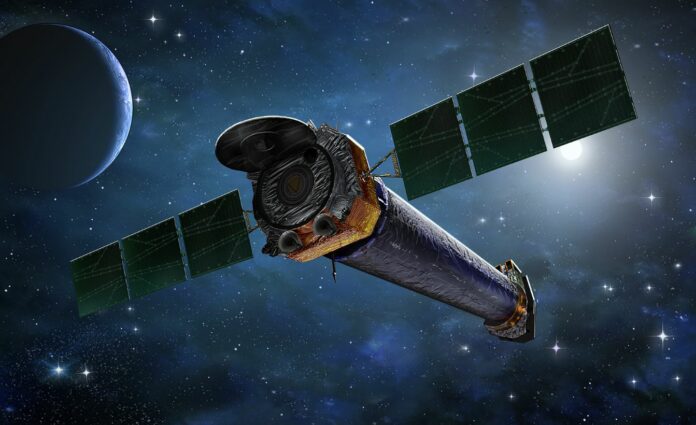NASA researchers have discovered a pair of massive black holes at the center of two dwarf galaxies on a collision track. Dwarf galaxies are ones that have less than three billion Suns’ worth of stars in them. The Milky Way is around 60 billion solar masses heavier than the Sun.
Astrophysicists estimate that a few hundred million years after the Big Bang, the cosmos was teeming with dwarf galaxies. But most of them ended up crashing into each other in the smaller and more crowded universe of that time. This started a chain of collisions that made the larger galaxies we see today.
At the same time, the black holes in the galaxies’ centers are merging and expanding. We can learn more about the evolution of black holes and galaxies in the early cosmos if we can comprehend how both of these encounters take place.
Astronomers have identified several instances of black holes on collision trajectories in bigger galaxies that are pretty nearby, remarked author and astrophysicist Marko Micic.
But searches for them in dwarf galaxies are significantly more difficult and have so far been unsuccessful, he said. Since they are intrinsically so far away from us, early dwarf galaxies provide a challenge for research because they are dim and hard to see.
Scientists have seen a pair of dwarf galaxies merging quite nearby, but sadly it was not feasible to confirm that both galaxies had core black holes in that instance.
“We’ve identified the first two different pairs of black holes in colliding dwarf galaxies,” added co-author Olivia Holmes.


“Using these systems as analogs for one in the early universe, we can drill down into questions about the first galaxies, their black holes, and [the] star formation the collisions caused.”
One of the pairs of black holes that are colliding is in the galaxy cluster Abell 133, which is about 760 million light-years away from Earth.
The other one is in the Abell 1758S galaxy cluster, which is even farther away at 3.2 billion light-years.
The researchers claim that the features in both galaxies are unmistakably indicative of an ongoing galactic collision.
The two merging black holes in Abell 133 seem to be involved in the latter phases of a merger between the two dwarf galaxies that serve as their hosts.
Elstir and Vinteuil, unlike Abell 133, are in the early stages of a merger; nonetheless, a bridge of stars and gas is building between the two in a manner somewhat similarly to Abell 133.
The team said that understanding how dwarf galaxies and their central black holes collide and merge could also help them figure out how the Milky Way came to be.
In fact, scientists think that almost all galaxies started out as dwarfs or other kinds of tiny galaxies, then over the span of billions of years, expanded via mergers.
According to co-author Brenna Wells, “Most of the dwarf galaxies and black holes in the early universe are likely to have grown much larger by now, thanks to repeated mergers
“In some ways, dwarf galaxies are our galactic ancestors, which have evolved over billions of years to produce large galaxies like our own Milky Way.”
Jimmy Irwin, an astronomy professor at the University of Alabama and a member of her team, said, “Follow-up observations of these two systems will allow us to study processes that are crucial for understanding galaxies and their black holes as infants.”
The paper has been approved for publication in The Astrophysical Journal, and a preprint of it is available on the arXiv.
Image Credit: NASA/CXC/Univ. of Alabama/M. Micic et al
